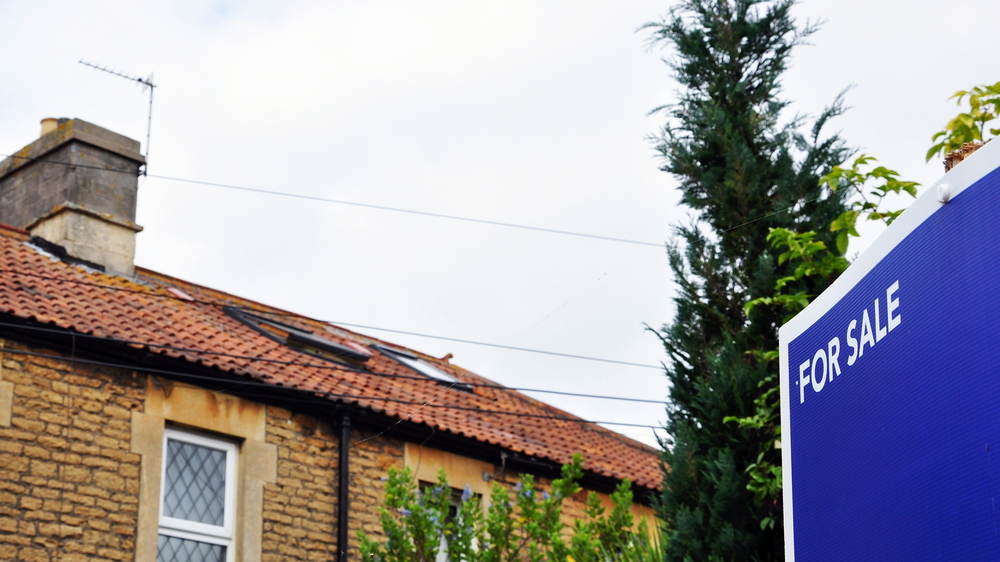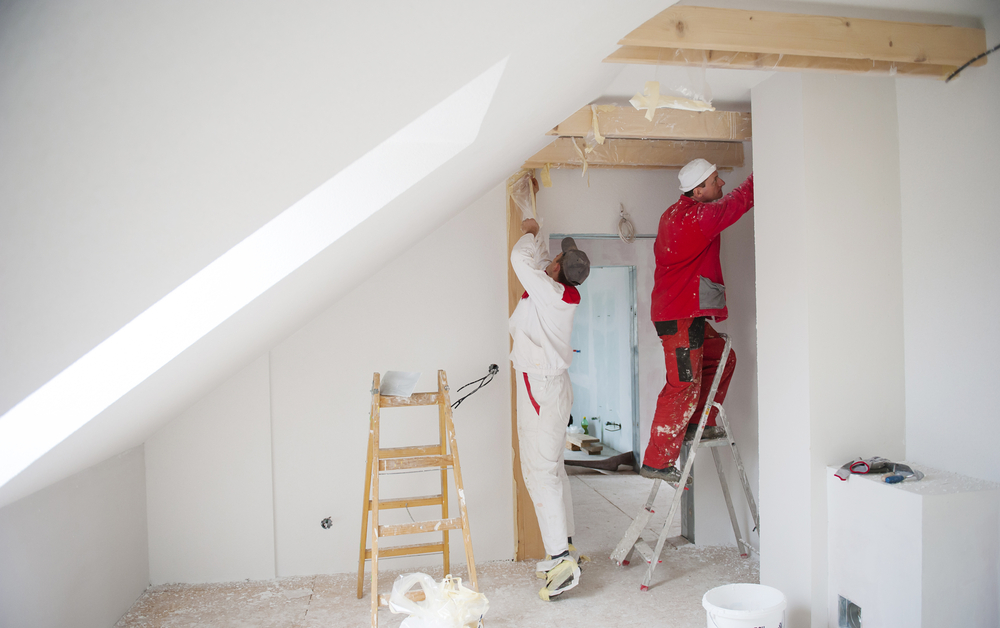|
Top Tips for Buying a Fixer-Upper, Plus More
Welcome to the February edition of the Pygott & Crone newsletter.
In this month's edition, the number of home movers has reached their highest levels since 2007, whilst the cost of homeownership has also reached a ten year low.
Also this month, a recent Halifax survey has revealed how much our children think they will need to buy a home and we share some top tips on buying a fixer-upper.
The Number Of Home Movers at Their Highest In A Decade

Activity within the UK property market seems to be on the rise of late as the number of property transactions in 2017 were at their highest since 2007.
Recent figures from Lloyds Bank have revealed that just over 370,000 people moved home last year, which is not only a 2% increase on the number of transactions from the previous year but also the most amount of transactions seen in a decade before the financial crisis.
While this is the highest level of activity seen in quite some time, it is still a way off the reported 653,000 movers seen in 2007; however, the growth in 2017 is definitely a positive sign, amongst the current economic uncertainty.
The research from Lloyds bank also showed that the average deposit broke &100,000 for the first time in 2017 and the average in London almost surpassed &200,000.
The average price paid for a home in 2017 stood at &296,731, a &6,000 increase on the figure seen the previous year.
According to Lloyds Bank, there are a few factors that may be contributing to the rise in activity such as low mortgage rates and high employment levels, making the process more affordable for buyers and the continuous growth of house prices over recent years have provided vendors with a substantial amount of equity.
Every region of the UK, except for greater London, saw an increase in property transactions with the south-east topping the table of movers with 65,400 people deciding to trade homes last year.
Mortgage products director at Lloyds Bank, Andrew Mason, believes that this increase in activity is due to rising house prices.
Mason commented, “House price increases will have boosted equity levels for many homeowners, enabling movement along the housing ladder…
“Taking advantage of increased equity levels by putting down a bigger deposit can really make a big difference towards what home movers can afford. It can be the difference between a good home and the right home.”
CEO of Emoov.co.uk, Russell Quirk also spoke on the latest statistics, stating that it should not be overlooked just how positive of a sign it is that first-time buyers are returning to the market.
Quirk said “While a boost in equity will have also aided many home movers to take the next step, perhaps the most important change the market has seen, is the increasing number of first-time buyers. This is particularly encouraging when you consider the huge barrier of unaffordability not just where the price of a property is concerned, but also the initial deposit required to secure it.
"Over the last year or so, market uncertainty has deterred many from committing to a sale in fear of cashing out too early on their existing asset. It’s this increasing level of first-time buyer demand that has kept the market ticking over as a result of their aspiration to become homeowners, not their desire to profit from their existing home.”
The Cost of Owning a Home at its Lowest Since 2007

It seems that repeatedly we hear about just how unaffordable homeownership is, but new figures from the Office for National Statistics (ONS) suggest that it is cheaper to do so than it has been for a very long time.
New data from the ONS has looked into the average percentage of outgoings allocated to a variety of expenses and found that the cost of owning a home appears to be the lowest it has been for over a decade.
Recent figures from the ONS have revealed that the percentage of total household expenditure going towards mortgage interest payments have fallen to 3.77%, which is quite the drop from the 7%+ peak seen in 2007/2008.
The cost of renting a home has also decreased to lows not seen since 2011, with only 8.52% of outgoings allocated to rental payments, a similar figure to the 8.44% seen 6 years prior.
According to the statistics, the cost of running a home has also decreased with the percentage of household outgoings allocated to water supply down to 1.61% a ten-year low, gas and other fuels falling to a nine-year low at 4.01%, although this is still considerably higher than most other outgoings.
The only expenses to see a rise over recent years was the cost of maintaining a home and council tax.
House maintenance is currently at the highest level since 2011, now standing at 1.55%, household goods and services sit at a 10 year high, taking up 7.09% of household expenditure and council tax now accounts for 4.04% of outgoings, the highest peak for 7 years.
CEO at Emoov, Russell Quirk, spoke on the findings of this research, he said, “While they still account for the largest proportion of our household expenditure, the cost has actually reduced when compared to the bigger picture of our total household outgoings,”
Quirk added “While the proportion of spend in terms of getting a roof over our head may be reducing, the cost of maintaining that roof is highest it has been in a long time. For those looking to get onto or further climb the ladder, it shows the importance of managing costs when trying to save and demonstrates how reducing other weekly outgoings can make all the difference in improving your purchase power".
Top Tips for Buying a Fixer Upper

The ‘fixer-upper’ is a property that has the capability to stir a myriad of mixed feelings. On the one hand, there’s the feelings of elation and self-satisfaction, knowing that all your hard work, late nights and lack of social life has all been worth it. On the flip side, there’s all the…hard work, late nights and lack of social life…
Make no mistake, taking on a ‘fixer-upper’ is a labour of love and one where persistence is key. However, putting your own stamp on a property is a great feeling, so with this in mind, here are our top 5 tips to help you get the very best from your dream ‘fixer-upper’.
Location, location, location
Understanding the area where your ‘fixer-upper’ is located is a key consideration. Areas can quickly become both desirable and undesirable depending on fluctuating property prices. Getting the right information from an established property professional, one who truly knows the market, area, local amenities, and any future developments that could impact pricing, will all help to determine if the property you’re looking at is worth the investment.
Evaluate your ROI
Once you’ve identified the right area, it’s time to find the right property. Even if you don’t intend to sell it immediately, understanding which ‘fixer-upper’ will achieve you the greatest ROI is an important consideration. Look objectively at the area you’ve chosen and evaluate the relationship between the local amenities and the property. For example, a three-bedroom house located near a school has a much greater probability of selling than a two-bedroom house in the same vicinity due to parents with children looking to buy or rent in the area. It might sound obvious, but taking these points into consideration will always help to achieve a greater resale value.
Cost, cost and then cost again
Getting informed estimates of all the work you’ll need to have done will pay dividends. It’s almost certain that your costs will increase from your original budget, so make sure you’re financially prepared for the work that you're about to have done. If you’re the hands-on type, you’ll save yourself precious funds. If you don’t know your flathead from your pozi, chances are it could be a costly project, so be financially prepared. Also, consider over-budgeting, that way you’ll have a reserve should anything go wrong.
Get ready for the strain
If you are committed to putting the hours in to achieve your dream, make sure that you make time for some respite. ‘Fixer-uppers’ have the potential to take up a lot of your time and energy. They can also put undue pressure on your relationships, so be prepared to use up a great deal of your patience.
Enjoy the experience
Ultimately, the project will (conceivably) have an ending. When it does, there aren’t many more satisfying feelings than knowing you’ve achieved exactly what you set out to do. Stepping back, hands on hips, covered in paint, looking lovingly at your ‘fix(ed)-upper’ will be your reward for all your hard work. As we’ve already stated, it’s a daunting task, but one where the pros can truly outweigh the cons when done right.
Halifax Survey: How much do kids think it costs to buy a home?

It appears that the next generation of homebuyers in the UK are in for a bit of a surprise when it’s time for them to leave the nest.
A recent survey from Halifax questioned people aged 11-21 on the processes involved and just how much it costs to buy a home, with surprising and occasionally humorous responses.
Collecting response from over 1,000 participants, it appears that “becoming a homeowner feels like a mystery for Generation Z” according to Managing Director of Halifax, Russell Galley.
When asked how they planned to buy a home a third of children aged 11-14 said that their parents would simply give them the cash to do so, while just over one-fifth of 18-21-year-olds believe that the government would help them into a home.
The price tag of a property is going to be quite a shock to some as 20% of respondents believe it only takes &50,000 to &200,000 to purchase a home in London, which is a slight underestimation of the actual average price for first-time buyers in the capital, where homes cost &422,580.
While their estimations on price may be a lot lower than reality, this should not be a problem, however, as one in five believe that they can borrow an unlimited amount of money from a bank in order to finance the purchase.
Before borrowing the rest of the money to get them across the line, it appears they will still be waiting some time before they have enough for a deposit, as 25% of 15-17-year-olds expect it will take them 20 years to save up for a deposit.
According to Russell Galley, most participants did have a good understanding of the process, but there is still some more educating that needs to take place. Galley said “Although our research found that the vast majority of 11 to 14-year-olds understand what a mortgage is, one in 10 aged 18 to 21 think stamp duty is money to pay for stamps – so there’s clearly a job for all of us to help kids get a better idea of what’s involved with taking the first step on to the property ladder.”
<< News
|
|